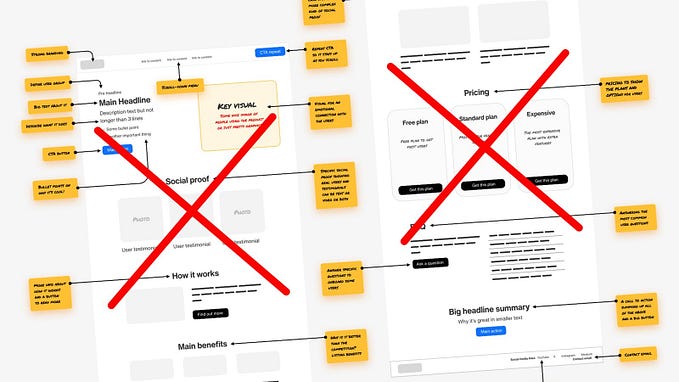How to Validate if Your SaaS Startup Has Achieved Product Market Fit ?
Updated April 2021

What is Product — Market Fit?
Product-market fit is a phrase used to describe the point at which there is *broad* market acceptance for a new application. In recent years many startups have embraced the lean startup methodology as espoused by the likes of Eric Ries and Steve Blank . They argue that startups need to behave differently compared to how real companies do. Startups need to validate the assumptions they are making, and to do so they need to build a minimal viable product and to ‘get out of the building’ to meet prospects and to learn whether or not there is a demand for your fledgling application.
In the initial phases it is likely that the feedback obtained will indicate changes needed; from minor iterations to full pivots, if the early product does not adequately meet the needs of the target market. Based on this feedback the product can be tweaked (or overhauled) to better meet the needs of the initial market segment being targeted.
Once you have a sufficient volume of real users i.e. those who have purchased the application and use it regularly, then entrepreneurs can have more confidence that there is a market demand for what they’ve built. In other words, they are solving a real problem for a particular audience. This inflection point is essentially when you have demonstrable evidence of objective third party traction and not family/friends related soft sales (see my earlier post on The Importance of Traction ).
“The number one problem I’ve seen for startups, is they don’t actually have product/market fit when they think they do.” Alex Schultz
Before we look at why this concept is important it is worth addressing an ‘elephant in the room’. In recent years a number of commentators like April Dunford have argued convincingly that the concept is inherently flawed, ill defined and a VC construct designed to *help manage expectations around valuation*.
I have some sympathy for this view, however I do think that directionally there are some valuable lessons to be had in analysising the phase before mass adoption. Hence this article focuses on the stage which is before startups have obtained a critical mass and are thus trying to validate the assumptions they make about the market opportunity. I will persist in calling this a search for product-market fit while acknowledging that it is indeed an opaque concept.
So for the purpose of this article we will assume product-market fit aligns with a point when a startup is generating a *decent volume* of inbound leads, are converting a signficant portion of these and are retaining a signficant percentage of these.
Why is Product-Market Fit Important?
Product-market fit is important because until that point you don’t know whether or not what you are building solves a real problem that a large enough market has. Without clarity on this, you could continue investing in building something that is not commercially viable. Worse still you could burn cash by hiring prematurely or investing in sales and marketing that will not generate a return (premature scaling is often cited as one of the main reasons startups fail).
“80% of SaaS companies never make product market fit.” Peter Reinhardt
For B2B SaaS startups there are a number of elements that contrive to muddy the waters here.
Firstly, if the application is particularly innovative the market may need to be educated as to the benefits which takes time and costs money.
Secondly, if you’ve taken VC investment, they’ll be keen to accelerate sales putting pressure on founders to skip this ‘research’ phase.
Finally, if sales cycles are long (and you are choosing to also prioritise sales) the feedback loop can be weak so you are not learning about demand and usage.
In these scenarios, it is usually best to offer free access to the earliest prospects in return for case studies and feedback. Case studies serve as useful social proof (independent validation) and are vitally important as you look to scale.
“Startups need 2–3 times longer to validate their market than most founders expect. This underestimation creates the pressure to scale prematurely.” (Startup Genome Study)
How do You Measure Product-Market Fit?
A good starting point is to look at user numbers discounting any initial sales closed via your own networks.
How many people have signed up, paid and continue to use it (gaining value from it) that did not have a personal connection with you? Naturally, you want this number to be pretty significant in both real terms and revenue terms.
“Glimmers of false hope is not the same as customers wanting to rip it out of your hands. Product Market fit feels like a landmine going off.” Peter Reinhardt
Once lead velocity starts growing significantly and conversion and usage rates follow suit then this can be used as a strong proxy that it has been reached. Retention also plays a part — as it underpins the unit economics of viable SaaS businesses. There is an expectation that sales and marketing expenses are up front, and revenue is spread out over a number of years into the future. This puts pressure on cash flow, however, it also means the unit economics are bad if the assumption of cash flows being generated well into the future is flawed (i.e. where churn rates are high).
Can You Put a Number on it?
Not really. And this is a core point of April Dunford’s arguments. If it is so ill defined, and hard to measure can we really say it exists? As I mentioned before for me the value is in recognising that SaaS businesses have different phases and that strategies differ greatly depending on the phase you are at. Hence we are still focused on those early unsure days when you are trying to use evidence to indicate where you are on your journey.
Given SaaS companies range from flea hunters (targeting millions of small customers at a $10 price point) to elephant hunters (enterprise customers paying $100K per year) the target number/revenue will vary depending on where your company sits on the spectrum. (See Christoph Janz: 5 Ways to Build a $100M Business for more on this idea). This alone makes it difficult to pin numbers on it.
There is also a real divergence of opinions as to what feels like a good representative data point. Leading UK VC, Jos White of Notion Capital argues that;
“ As a general rule of thumb, I believe the number (customers) has to be in double figures”.
David Cummings reaches a similar number arguing in his post 5 Ways to Identify Product-Market Fit, that 10+ customers must have signed on in a modest period of time (and they are not friendlies).
US VC Brad Feld takes a more aggressive view arguing that -
- From $1 to $10k MRR, you have the illusion of product/market fit.
- From $10k to $100k MRR you’ve got a semblance of product/market fit.
- Going from $100k to $500k MRR is a product/market fit sweet spot.
Given the divergence of views, it is thus not easy to reach an agreed figure, although the evidence is pretty overwhelming that most founders scale prematurely indicating they believe they have reached product-market fit when they have not.
The fact these commentators are mostly VC’s also align with April Dunford’s view that it is primarily a VC construct to help them place startups into different cohorts.
How Can You Tell When You Have Achieved It?
In the absence of hard numbers there are a number of proxies that can be used including:
1/ You note a significant increase in inbound inquiries
2/ Word of mouth starts to drive referrals
3/ Users are signing up, paying and deriving value from the application (as evidenced by usage and adoption)
4/ Usage becomes habitual and churn is low
5/ Any Net Promoter Score surveys you run result in an average score of 8–10
“In short, customers are knocking down your door to get the product; the main goal is to actually answer the phone and respond to all the emails from people who want to buy. You can always feel when product/market fit isn’t happening. The customers aren’t quite getting value out of the product, word of mouth isn’t spreading, usage isn’t growing that fast, press reviews are kind of “blah”, the sales cycle takes too long, and lots of deals never close.” Marc Andreessen
Sean Ellis (CEO of GrowthHackers) advocates that the best way to measure it is to survey your users asking
‘How would you feel if you could no longer use [product]?
He argues that if you find over 40% of your users say they would be “very disappointed” if your product was no longer available then there is great chance that ‘you can build scalable, customer acquisition growth.’
Regardless of how you assess it, it is important that senior decision makers are aware of the concept and that there needs to be agreement as to when there is a consensus that the signs are sufficiently strong to shift gears.
“One of the most difficult decisions for a startup is determining when your product is good enough to drive sustainable, scalable customer growth. Trying to scale too early can easily kill your startup.” Sean Ellis
What Do You Do When You’ve Reached It?
Once you’ve reached product-market fit the theory goes that you can look to invest more aggressively in both sales and marketing. In the words of Gary Vaynerchuk, “you go all in”.
You should also have sufficient evidence at this stage to raise more capital if that is appropriate for your growth ambitions. If you’ve got a scalable business where the addressable market is large and you’ve achieved product-market fit you’ll be very much in demand!
A Word of Caution
Unfortunately reaching product-market fit is not a sign to pop open the champagne bottles. While it represents a milestone for all startups it does not follow that you are on the road to unicorn status. Bigger issues now come into play:
- Is the business model fit for purpose?
- Can you reduce the cost of customer acquisition (CAC)?
- Is there a large addressable market that you can access?
- Can you scale the business?
- How do you grow internationally? (Most pre product market fit clients are often domestic)
While it does mean you are on the right track it is no time for complacency. It does however mean your strategic options and priorities come sharply into focus.
++++++++++++++++++++++++++++++++++++++++
Sales and Marketing
So how does sales and marketing fit with the above? Both sales and marketing have important roles to play depending on the stage you are at. If pre product market fit ‘sales efforts’ should be lead by the founders, after all, these early stages are more about assumption validation than sales. Once you are comfortable that product-market fit has been reached it is time to dial up sales efforts (and depending on your price point/target clients) this may involve your first senior sales hire.
From the marketing side, it is important that from Day 1 the application is marketed effectively. In the initial stages, marketing can support web development, market research, content marketing and storytelling. Paid acquisition should not form a part of the marketing strategy at the very early stages save to help test assumptions. Once product- market fit has been reached then marketing can ramp up focusing on acquisition, conversion and retention.
In short, you are looking to keep cash burn low pre product market fit investing in product and research, whereas once it is achieved you should focus on sales and marketing as you look to scale as well as exploring growth capital options to accelerate growth.
Summary
In summary, product- market fit has emerged as a key strategic milestone in most SaaS startups life. How you run your business will vary considerably depending on which side of the product market fit fence you are sitting on. Understanding the concept and recognising when you’ve achieved it is of vital importance, given the inherent dangers in scaling prematurely.
It is also important to note that there are legitimate questions as to the validity of the very existence of the concept. At the very least this article will hopefully have outlines how it is defined and perceived while also highlighting that there is valid criticsm of it as valuable approach to helping you decide on what strategy to pursue. At its most simplistic it argues that pre product market fit activities need to align around validating assumptions (like academic research) whereas post product market fit activities are aligned around acquisition and scaling. Scaling prematurely the argument goes is a sure fire way to burn through cash and escalating your demise.
This article originally appeared on SaaSresources
Alan Gleeson is a B2B Marketing Consultant based in London with a passion for helping SaaS businesses to grow.
Follow Alan on Twitter or visit Work With Agility to learn more.
Download my Definitive Guide to B2B SaaS Marketing










